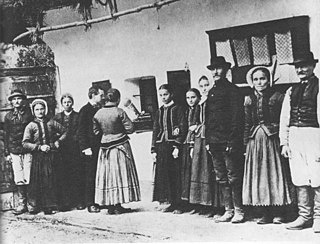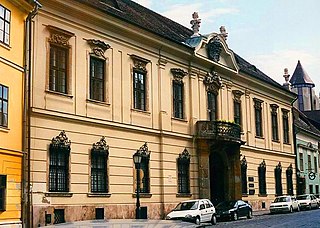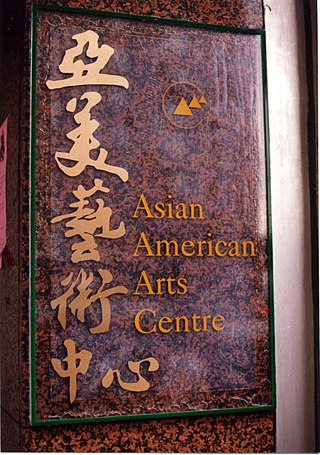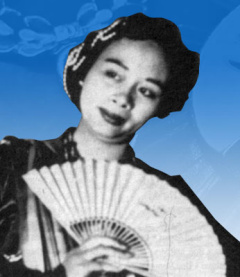Related Research Articles

Folk music is a music genre that includes traditional folk music and the contemporary genre that evolved from the former during the 20th-century folk revival. Some types of folk music may be called world music. Traditional folk music has been defined in several ways: as music transmitted orally, music with unknown composers, music that is played on traditional instruments, music about cultural or national identity, music that changes between generations, music associated with a people's folklore, or music performed by custom over a long period of time. It has been contrasted with commercial and classical styles. The term originated in the 19th century, but folk music extends beyond that.

Northwest Folklife is an independent 501(c)(3) arts organization that celebrates the multigenerational arts, cultures, and traditions of a global Pacific Northwest.

Festál is a free series of annual ethnically-related festivals that take place on the grounds of Seattle Center in Seattle, Washington. A major cultural program of Seattle, these festivals aim to celebrate and connect the city to its varied ethnic and international community. Most festivals contain various arts performances, dances, marketplace and other programs. These have also come to be the annual gathering place for ethnic groups of the community. Both older and younger people attend, especially the dances and musical concerts.

Folk art covers all forms of visual art made in the context of folk culture. Definitions vary, but generally the objects have practical utility of some kind, rather than being exclusively decorative. The makers of folk art are typically trained within a popular tradition, rather than in the fine art tradition of the culture. There is often overlap, or contested ground with 'naive art'. "Folk art" is not used in regard to traditional societies where ethnographic art continue to be made.
Alan Jabbour was an American musician and folklorist, and the founding director of the American Folklife Center at the Library of Congress.

The American Folklife Center at the Library of Congress in Washington, D.C. was created by Congress in 1976 "to preserve and present American Folklife". The center includes the Archive of Folk Culture, established at the library in 1928 as a repository for American folk music. The center and its collections have grown to encompass all aspects of folklore and folklife worldwide.
Public folklore is the term for the work done by folklorists in public settings in the United States and Canada outside of universities and colleges, such as arts councils, museums, folklife festivals, radio stations, etc., as opposed to academic folklore, which is done within universities and colleges. The term is short for "public sector folklore" and was first used by members of the American Folklore Society in the early 1970s.

Budapest has long been an important part of the music of Hungary. Its music history has included the composers Franz Liszt, Ernő Dohnányi, Zoltán Kodály and Béla Bartók and the opera composer Ferenc Erkel.

Simon J. Bronner is an American folklorist, ethnologist, historian, sociologist, educator, college dean, and author.
The Center for Folklife & Cultural Heritage (CFCH) is one of three cultural centers within the Smithsonian Institution in the United States. Its motto is "culture of, by, and for the people", and it aims to encourage understanding and cultural sustainability through research, education, and community engagement. The CFCH contains (numerically) the largest collection in the Smithsonian, but is not fully open to the public. Its budget comes primarily from grants, trust monies, federal government appropriations, and gifts, with a small percentage coming from the main Smithsonian budget.

The Asian American Arts Centre (AAAC) is a non-profit organization located in the Chinatown neighborhood of Manhattan in New York City. Founded in 1974, it's one of the earliest Asian American community organizations in the United States. The Arts Centre presents the ongoing developments between contemporary Asian & Asian American art forms and Western art forms through the presentation of performance, exhibitions, and public education. AAAC's permanent collection, which it has accumulated since 1989, contains hundreds of contemporary Asian American art works and traditional/folk art pieces. The organization also has an Artists Archive which documents, preserves, and promotes the presence of Asian American visual culture in the United States since 1945. This includes the East Coast, especially the greater New York area; the West Coast; and some artists in Canada, Hawaii, and overseas. The artists include Asian Americans producing art, Asian artists who are active in the United States, and other Americans who are significantly influenced by Asia. Pan-Asian in outlook, the Arts Centre's understanding of 'Asia' encompasses traditions and influences with sources ranging from Afghanistan to Hawaii.

Richard Kurin, an American cultural anthropologist, museum official and author, is the Acting Provost and Under Secretary for Museums and Research at the Smithsonian Institution. He is a key member of the senior team managing the world's largest museum and research complex with 6,500 employees and a $1.4 billion annual budget, caring for more than 139 million specimens, artifacts and artworks, working in 145 countries around the globe, hosting some 30 million visitors a year, and reaching hundreds of millions online and through the Smithsonian's educational programs and media outreach. Kurin is particularly responsible for all of the national museums, scholarly and scientific research centers, and programs spanning science, history, art and culture.

Michael Alpert is a klezmer musician and Yiddish singer, songwriter, multi-instrumentalist, scholar and educator who has been called a key figure in the klezmer revitalization, beginning in the 1970s. He has performed solo and in a number of ensembles since that time, including Brave Old World, Kapelye, Khevrisa, The Brothers Nazaroff, Voices of Ashkenaz and The An-Sky Ensemble, and has collaborated with clarinetist David Krakauer, hip-hop artist Socalled, singer/songwriter/actor Daniel Kahn, bandurist Julian Kytasty, violinist Itzhak Perlman, ethnomusicologist and musician Walter Zev Feldman, trumpeter/composerFrank London and numerous others.
Augusta Heritage Center in Elkins, West Virginia, United States, is a non-profit organization which fosters the scholarly study and practice of traditional arts in music, dance, craft, and folklore.
Anna Lomax Wood is an American anthropologist, ethnomusicologist and public folklorist. She is the president of the Association for Cultural Equity (ACE), established in 1985 by her father, musicologist Alan Lomax, at Hunter College, CUNY.
Folk and traditional arts are rooted in and reflective of the cultural life of a community. They encompass the body of expressive culture associated with the fields of folklore and cultural heritage. Tangible folk art includes objects which historically are crafted and used within a traditional community. Intangible folk arts include such forms as music, dance and narrative structures. Each of these arts, both tangible and intangible, was originally developed to address a real need. Once this practical purpose has been lost or forgotten, there is no reason for further transmission unless the object or action has been imbued with meaning beyond its initial practicality. These vital and constantly reinvigorated artistic traditions are shaped by values and standards of excellence that are passed from generation to generation, most often within family and community, through demonstration, conversation, and practice.

Lucrecia Faustino Reyes-Urtula was a Filipino choreographer, theater director, teacher, author and researcher on ethnic dance. She was the founding director of the Bayanihan Philippine National Folk Dance Company and was named National Artist of the Philippines for dance in 1988.
Inez Catalon was an American Creole ballad singer, who was one of the most well-known performers of the genre known as Louisiana "home music". These are a cappella versions of ballads and love songs, drinking songs, game songs, lullabies and waltzes performed by women in the home, passed down from earlier generations to provide entertainment for the family before radio and television existed. Home music is not considered part of the public performance repertoire of Cajun and zydeco music because the songs were sung in the home by women, rather than in the dance halls of southwestern Louisiana which featured almost exclusively male performers.
The Philadelphia Folklore Project (PFP) is a non-profit organization advocating for and providing documentation, presentation, education, and collaborative research to folk and traditional arts across the Philadelphia region in service of social change. Founded in 1987 by folklorist Debora Kodish, PFP offers workshops and assistance to local artists and communities through organizing concerts, events, and exhibitions. Their driving philosophy is that "diversity and equity are central elements of thriving communities." One of a handful of independent folk and traditional arts nonprofits nationwide, the organization is widely regarded as a powerful instrument for socially conscious and anti-racist activism and serves as a model for sustaining living cultural heritage in the fields of applied folklore, ethnomusicology, and anthropology. It seeks to foster growth in communities through access to grant funding and artistic venues, but also material and social infrastructure in defense against gentrification and through cultivating positive inter-communal relationships.

Los Pleneros de la 21 is a New York City-based drum and dance ensemble that has been active since 1983. They specialize in Afro-Puerto Rican bomba and plena music and related dance forms. In addition to performing, they run a community-based, not-for-profit educational company dedicated to preserving and celebrating Puerto Rican traditional culture and "fostering the legacy and history of Puerto Rican artistic traditions of African and Creole descent."
References
- ↑ "Home". ctmd.org.
- ↑ "Association for Cultural Equity". Archived from the original on 2009-02-07. Retrieved 2009-09-02.
- ↑ "Center for Traditional Music and Dance | Cultural Community Initiatives". Archived from the original on 2009-09-02. Retrieved 2009-09-02.
- ↑ "Rock Paper Scissors - Center for Traditional Music and Dance - Press Release". www.rockpaperscissors.biz. Archived from the original on 2008-05-31.